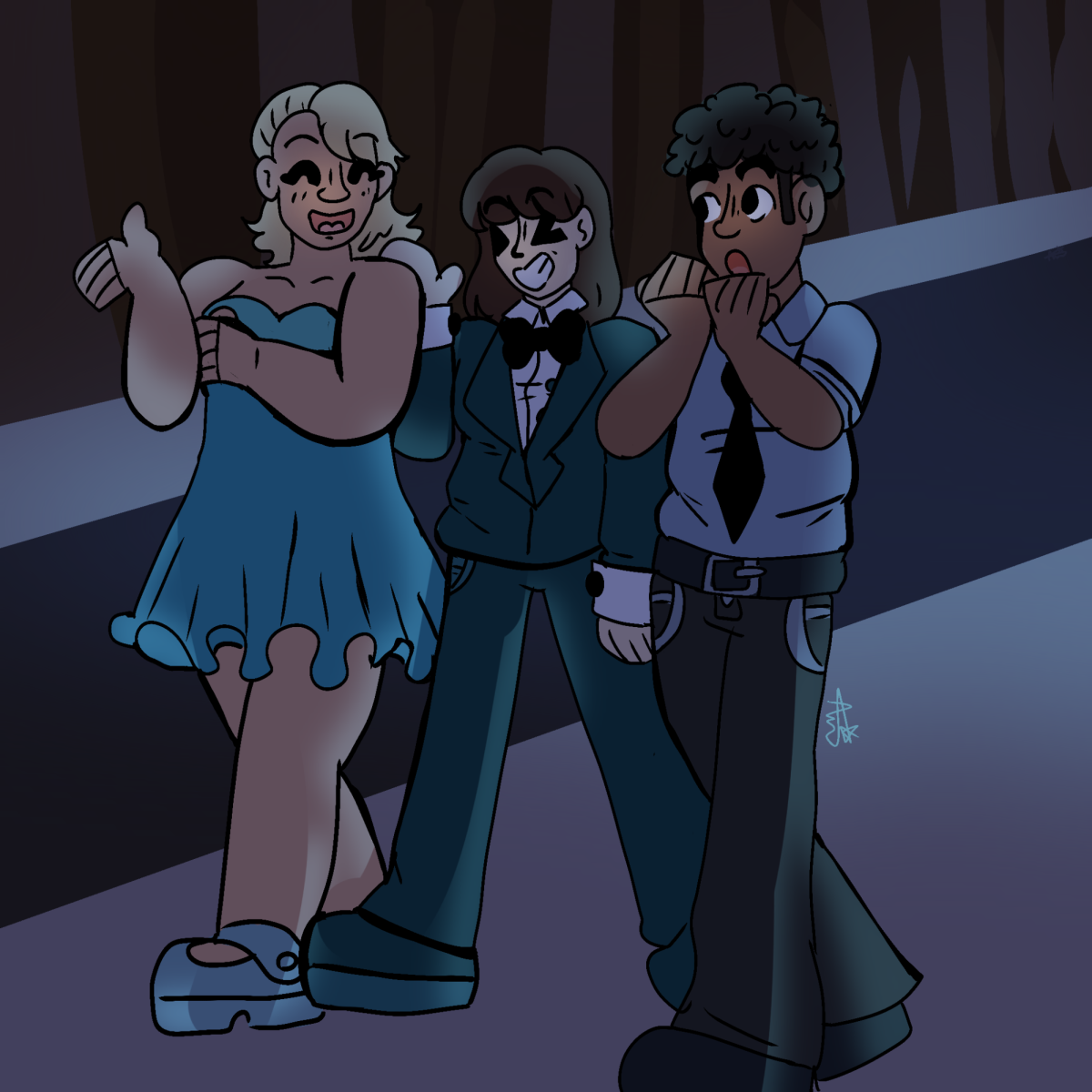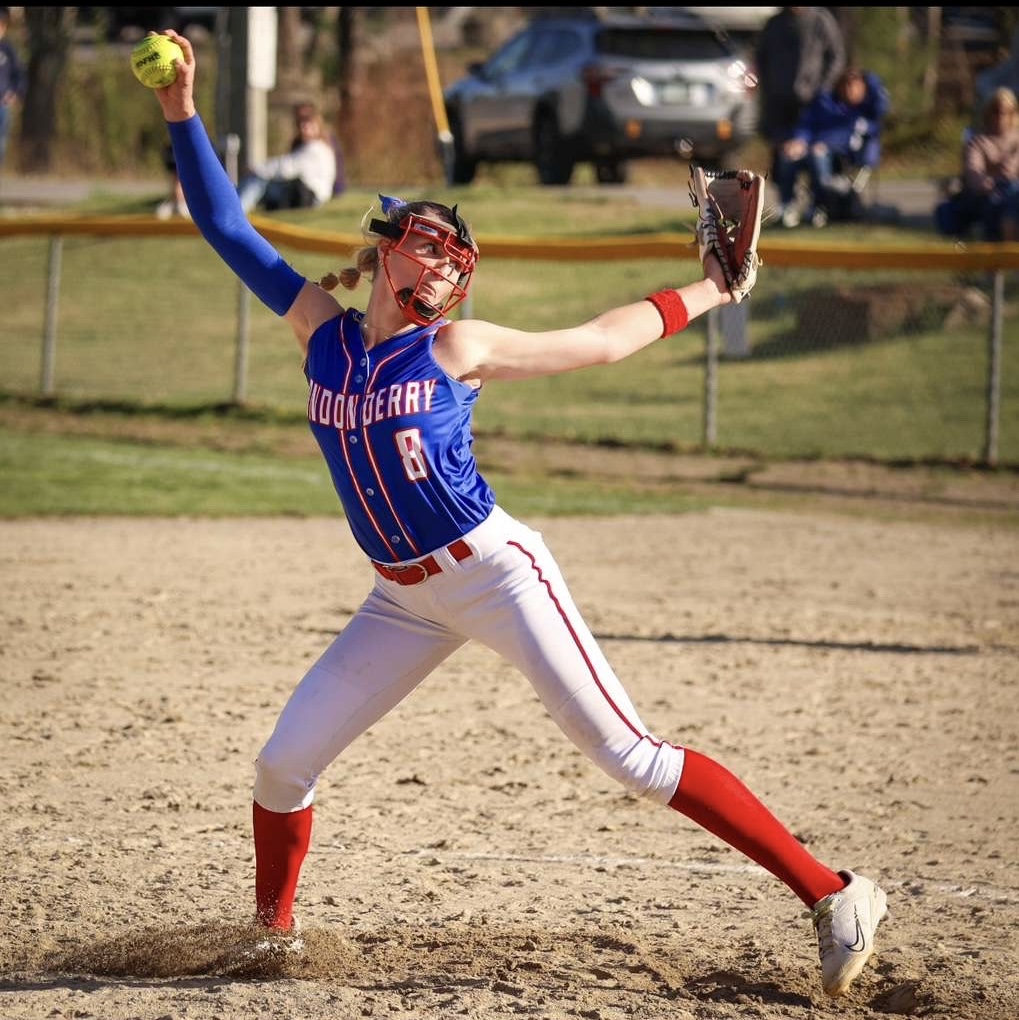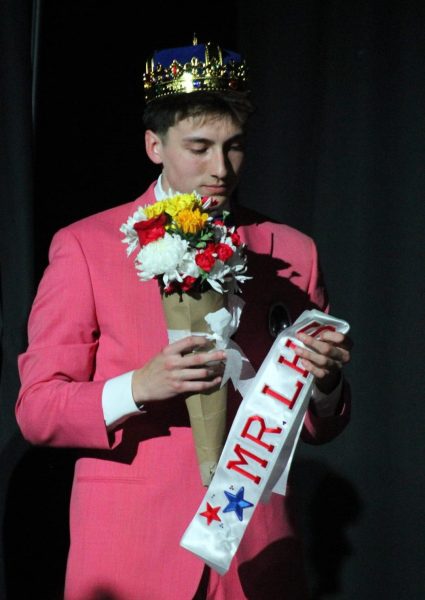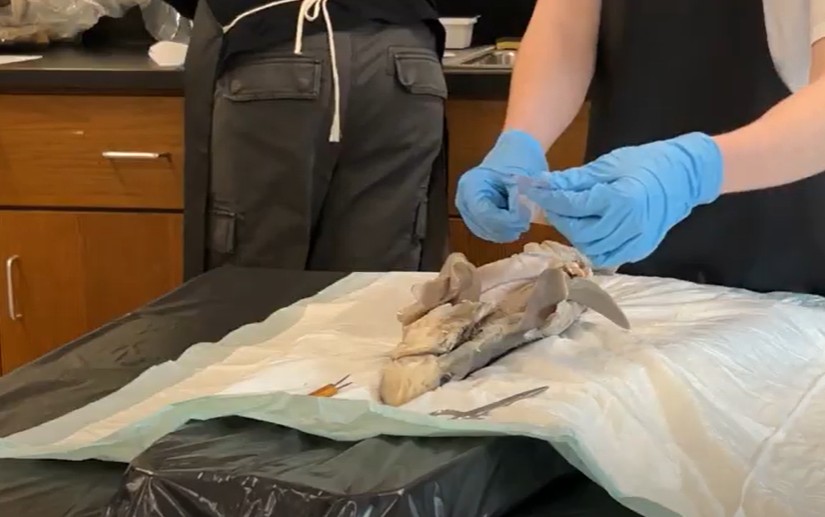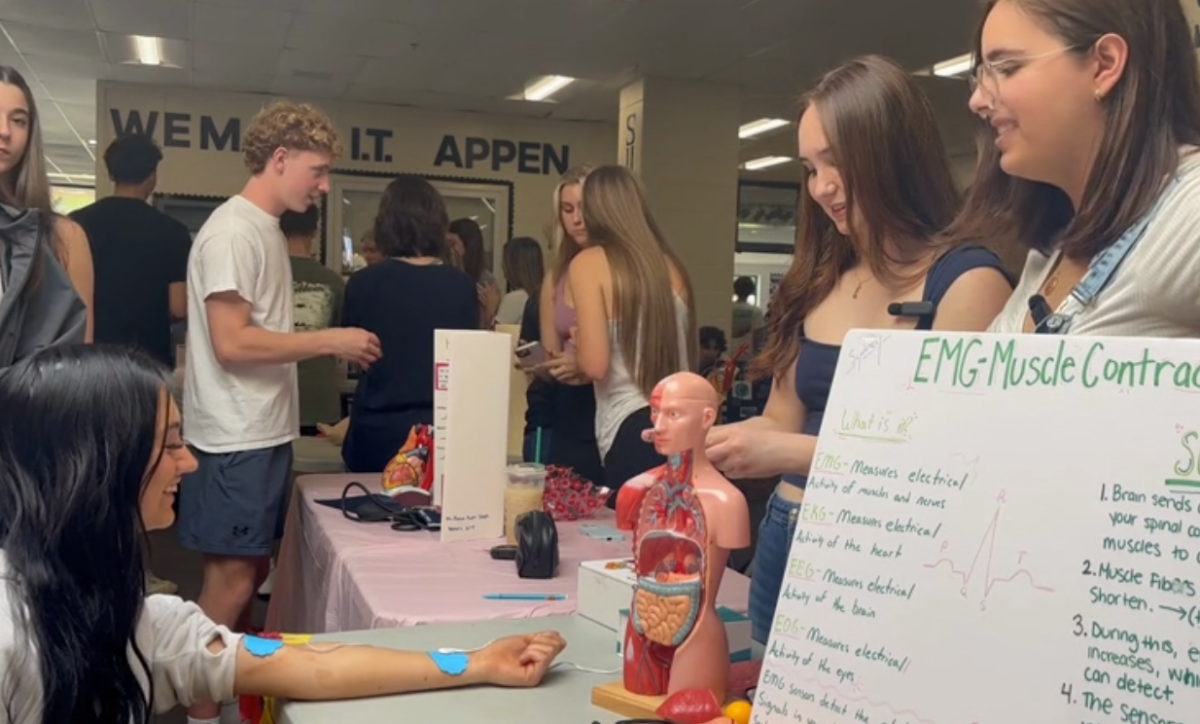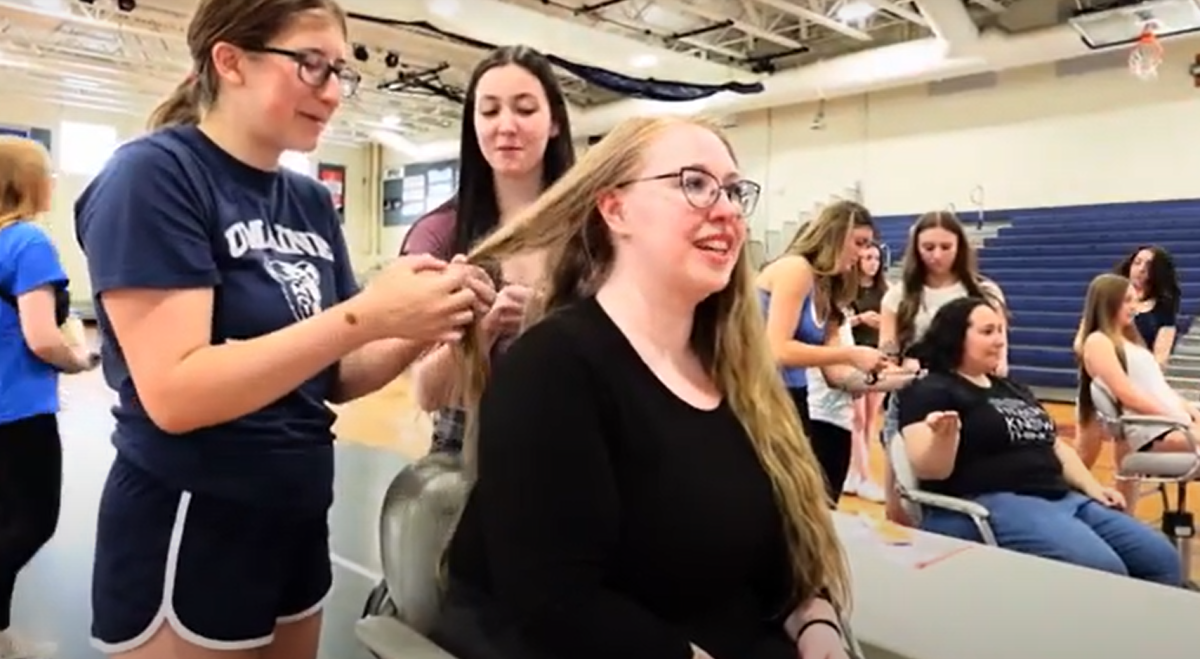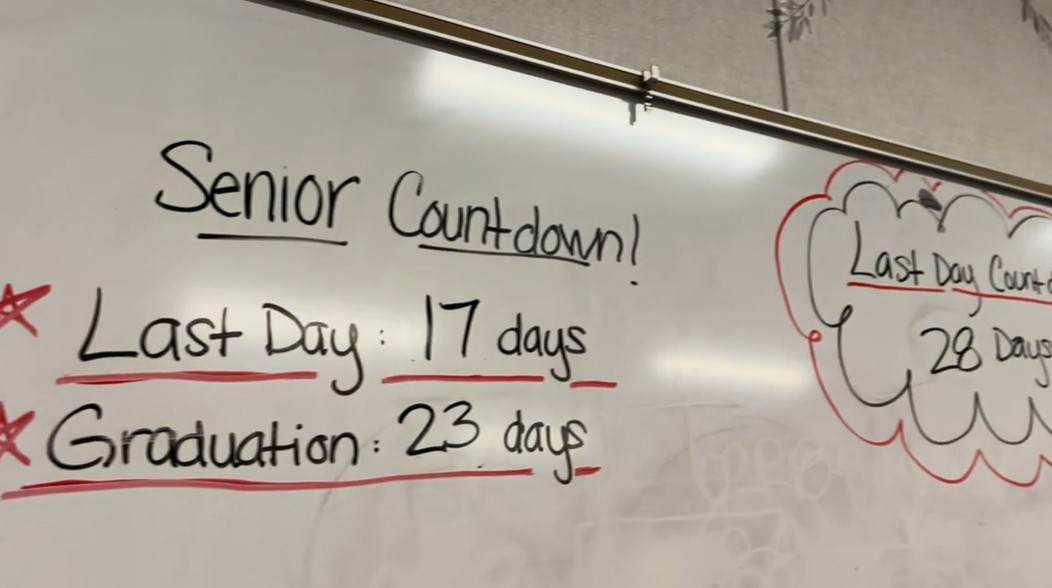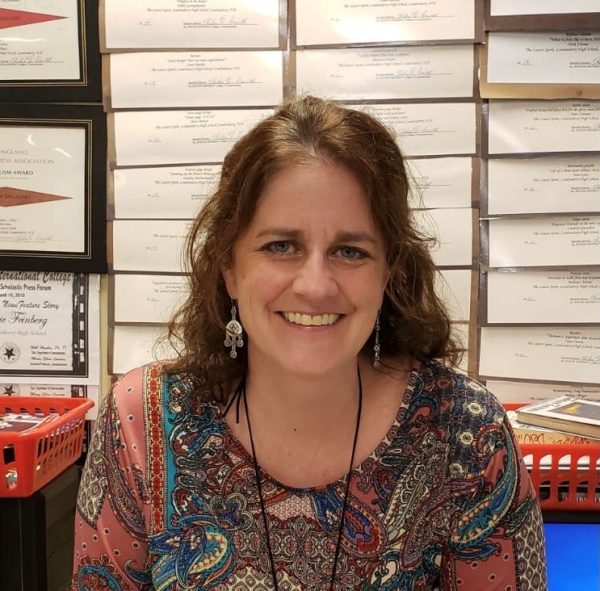Sophie, a fluffy Leonberger dog, and her handler Wendy Calnan, walked into the LHS library on Sept. 12, to an already-formed line of students waiting to pet and hug the school’s first official therapy dog.
Freshman Olivia Piland was one of 200-plus students and staff members who stood in line to meet Sophie throughout the day.
“I think it’s a good thing they brought [a dog] into the school,” Piland said. “High school is a lot for some people, and I think dogs are one way to help it.”
Senior Leah M. Doherty said getting to pet Sophie “will help raise morale” in the school.
“Honestly, I was feeling kind of down today,” Doherty said, “and it’s just a cute dog [that] makes me feel safe and nice. If people are feeling sad, they can go see a dog, and that’s pretty cool.”
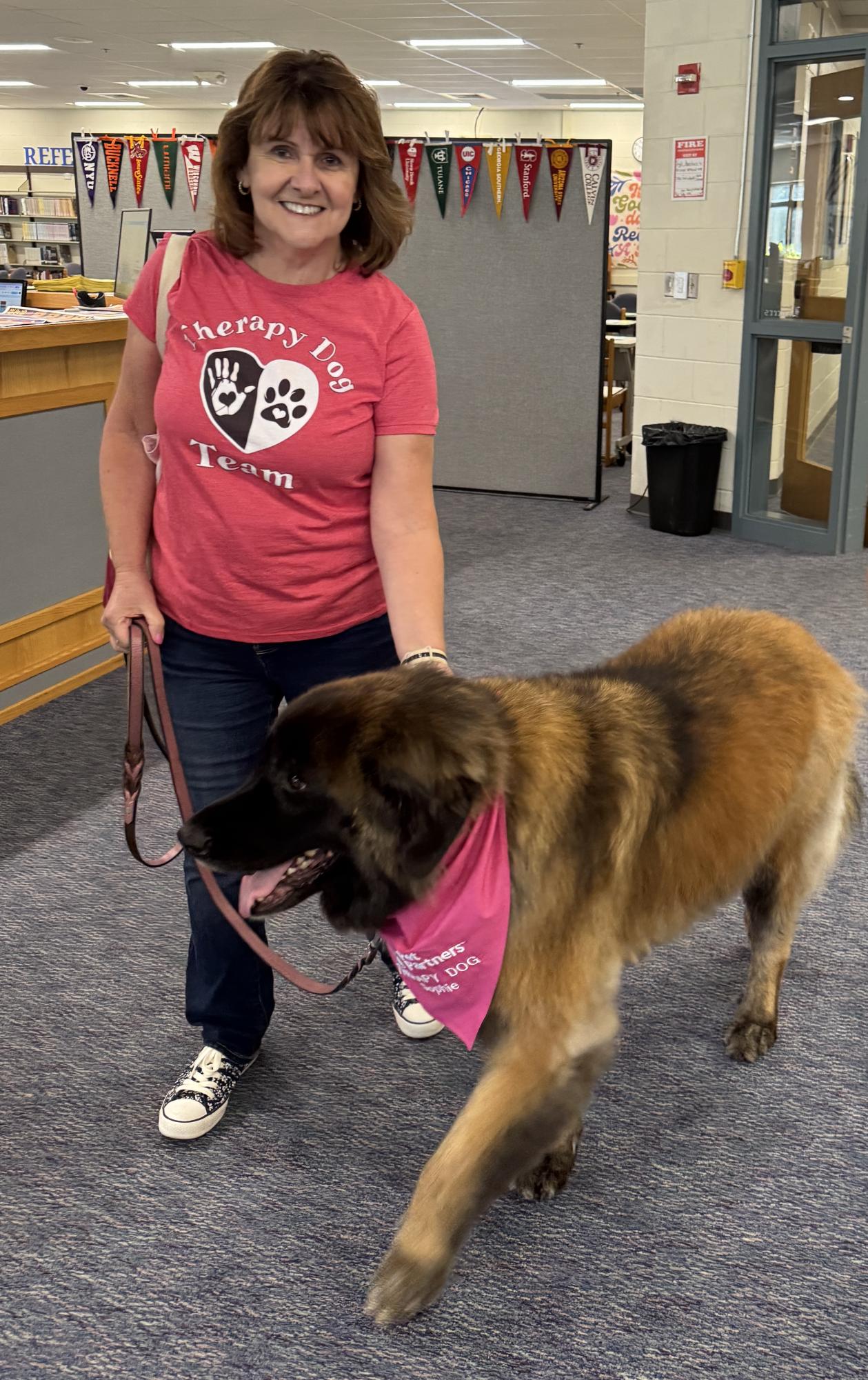
Librarian Michelle Wooding was “so excited” when the administration asked her to host Sophie.
“Part of our mission as a library has been to be as welcoming and happy a place as possible,” Wooding said. “We would love to host [Sophie] as many times as possible.”
While students and staff had to wait a few moments to see Sophie, civics teacher Suzanne Johnson, who led this initiative, has been waiting for almost 10 years.
“It started when there were several mass shootings,” Johnson said. “It was hard because it had been the third or fourth mass shooting in a short amount of time. I just said to the kids, ‘I wish we had puppies to play with right now,’ and they grabbed onto that idea.”
Students in Johnson’s civics class put together a policy they could propose to the school board, and “that’s where it took off,” Johnson said.
Then the semester ended, but Johnson had her next class continue where the last class left off. However, the process was slow.
“We kind of went backwards a little bit,” Johnson said, “until two seniors finally took it on as a senior project and actually did deliver the idea to the school board.”
The two graduated, and “the school board hesitated for various reasons,” Johnson said, so the process halted once again.
“Then COVID hit,” she said. “So there have been a few hurdles.”
Two years ago, during a school-wide event to spread mental health awareness, Johnson said she heard the new superintendent was “intrigued by the idea of therapy dogs.”
“I immediately reached out, and we got it rolling again,” Johnson said.
Once the school board passed the policy to allow therapy dogs in the school, administrators contacted Calnan, who has been visiting schools and universities with Sophie for the past year.
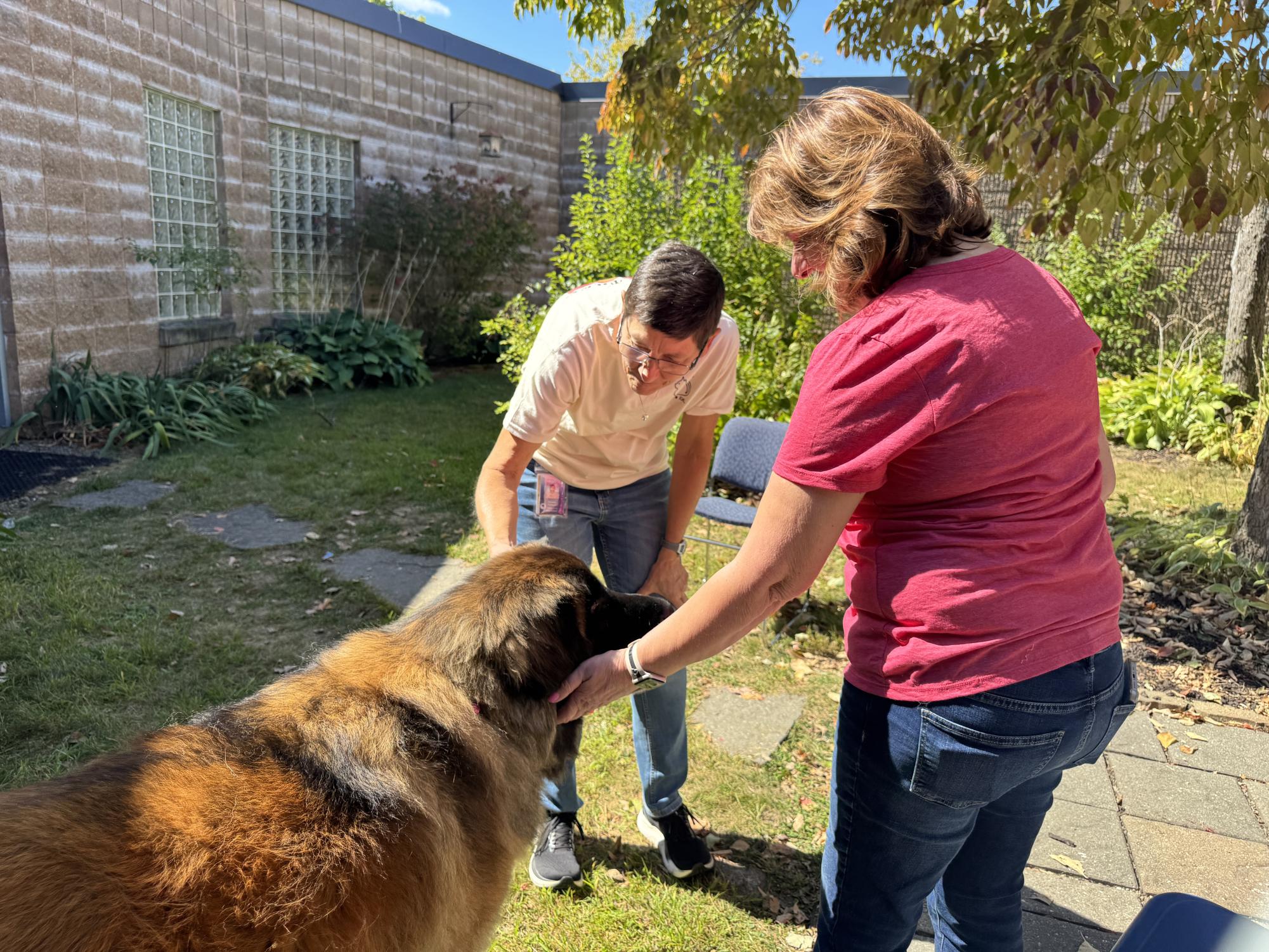
Calnan was the bookkeeper and then the principal’s administrative assistant at LHS until she retired in June 2022, so she is a familiar face.
“To know that Wendy’s here with Sophie is a double bonus,” Johnson said. “We know who Wendy is and what she can offer. She’s always been a calming and encouraging presence when she was here as an employee. To have her teamed up with Sophie is a double whammy.”
To become a therapy dog, Sophie first had to be certified as a “Canine Good Citizen” through the American Kennel Club. This process, according to Calnan, was a good preparation for the next step, which was to get certified as a therapy dog.
Sophie and Calnan trained through Pet Partners, which is a national organization for therapy animals. According to the Pet Partners website, “Pet Partners has registered and supported thousands of volunteer therapy animal teams who have made millions of meaningful visits around the world that help improve the physical, social, and emotional lives of both the people and animals involved.”
The training, according to Calnan, is not just for the therapy animal, but it is also for the handler. Since Pet Partners holds the liability for the dogs, the organization makes sure both the animal and handler are prepared. When Sophie was ready to be certified, Calnan and Sophie went to the evaluation, which lasted about two hours.
“She was great,” Calnan said. “When we did the dog-to-dog walkthrough, I heard the evaluator go, ‘That was textbook.’”
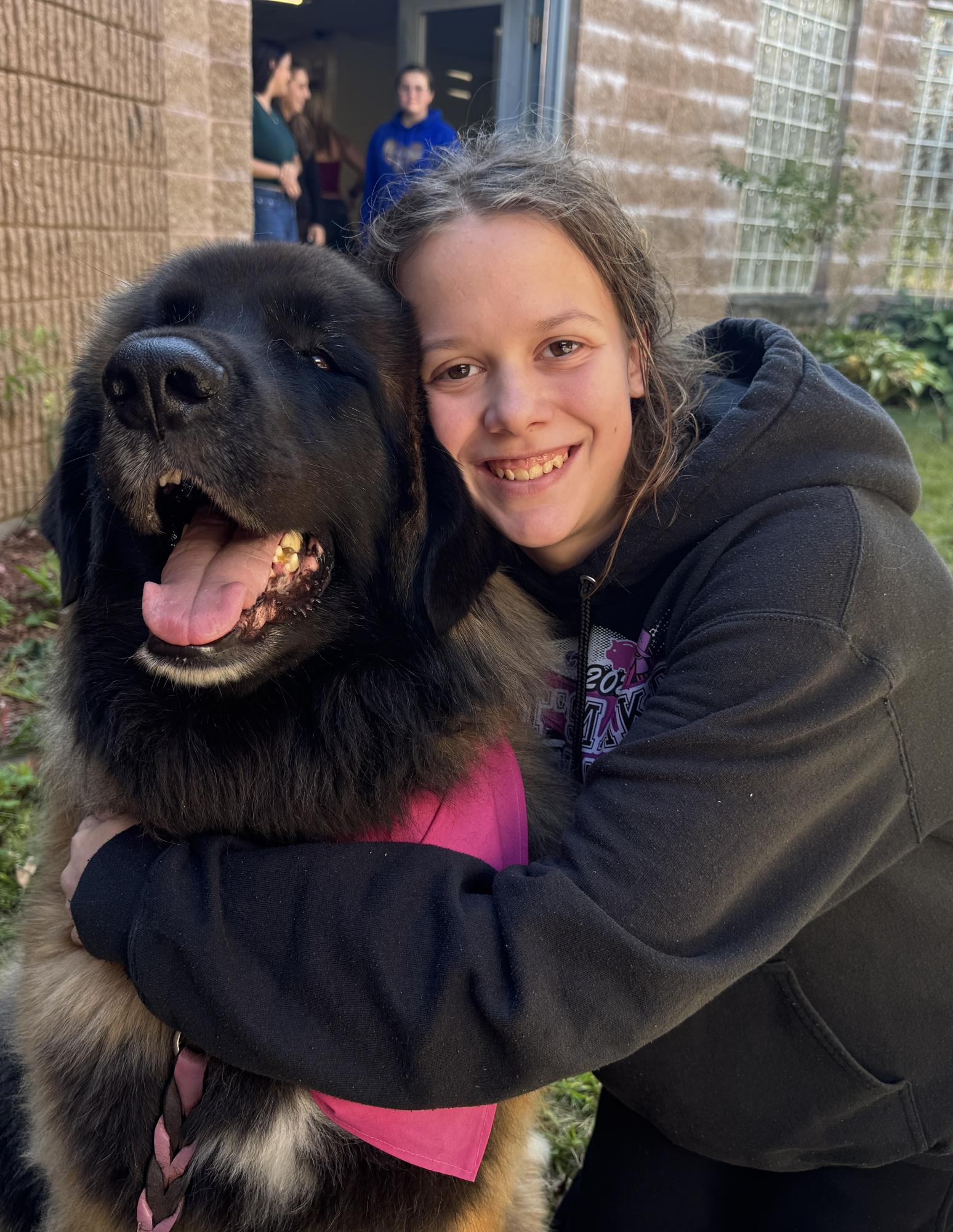
Sophie did well on all of the elements of the evaluation, but Calnan said “the worst one” for her was the separation.
“Somebody holds her,” Calnan said, “and I have to walk away and hide in a corner. I could hear her [whimpering].”
When Calnan heard Sophie whimpering, she thought to herself, “Oh, shoot!” because that was the last part of the evaluation, and she was worried this would negatively affect their score.
However, the evaluator told Calnan the purpose of that last part is to see if the animal would be aggressive around people when not with its handler. Since Sophie was only a little sad, but not aggressive, when she couldn’t see Calnan, this showed she has a good disposition to be a therapy dog.
When Sophie walks down the street, people stop to pet her and compliment her eyes or her fluffiness, according to Calnan.
“She just brings so much joy to a lot of people,” Calnan said.
Random people will tell Calnan they “just had a dose of therapy” after petting Sophie.
“It’s amazing the impact [therapy animals] have on people,” Calnan said.
Principal Rick Barnes said he thinks having a therapy dog at the school will be “a good addition to the overall culture and climate” of LHS.
“Everyone is happier when they have pets around,” Barnes said. “And Sophie’s particularly special, because of her size and her temperament and everything else, so it’s just a huge win all around.”
After waiting 10 years for this day, Johnson said she is happy it’s “having the impact everybody wanted it to have.”
“It’s bringing joy, which so many of us could use right now,” Johnson said. “It’s a hectic world, and when you get to stop and smell the roses, so to speak, by petting the dog, the world’s a better place. And for the kids to have that is awesome.”






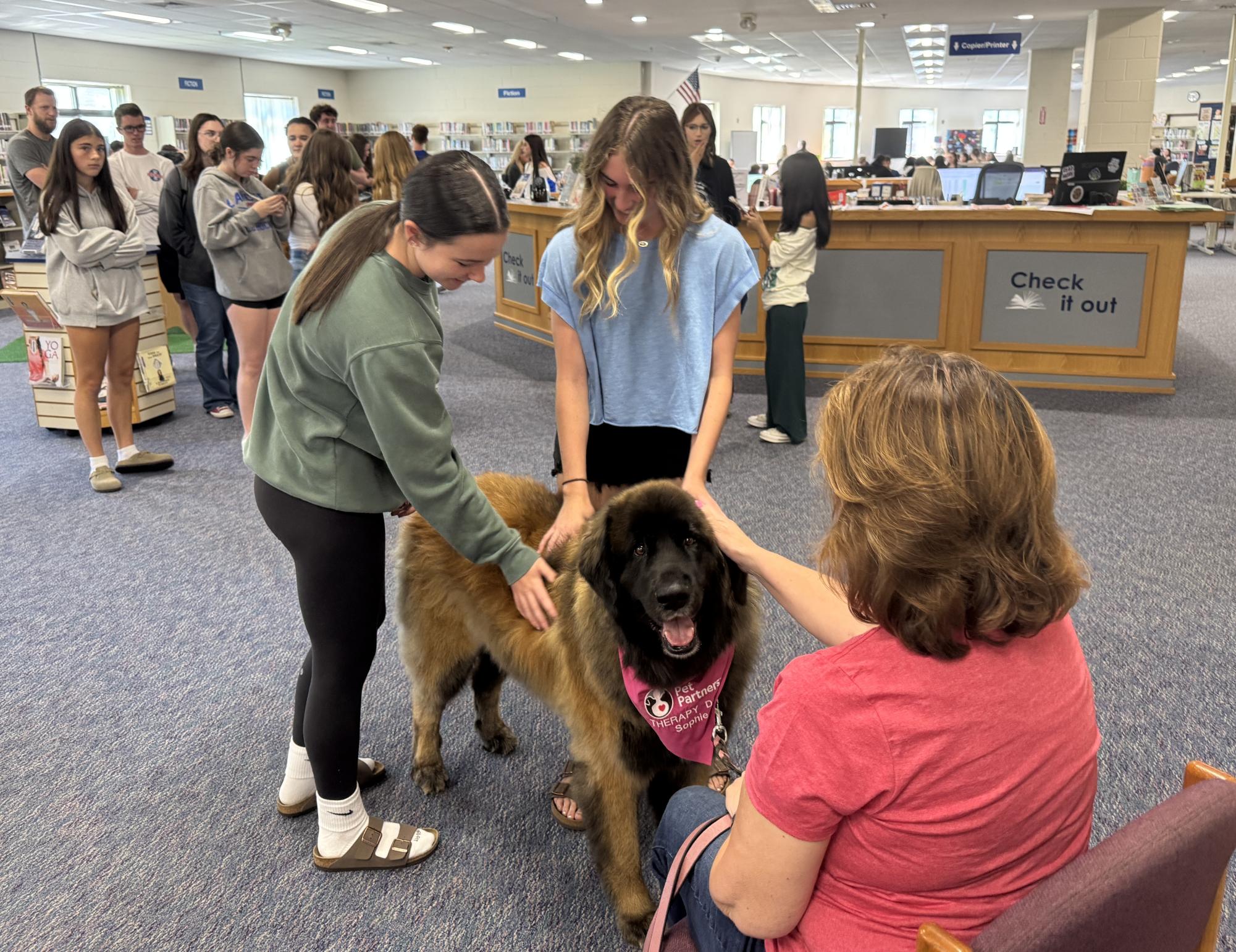
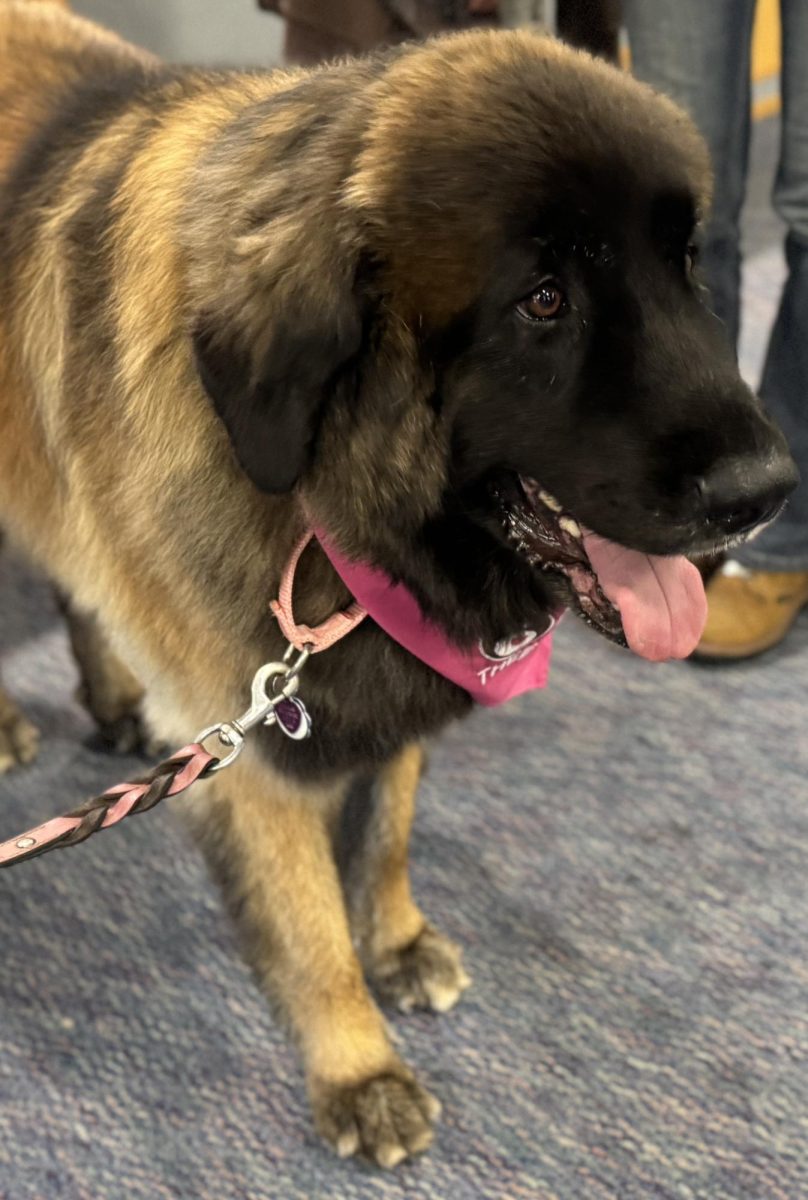


![Carol Ritchie helps one of her students through a computer assignment during A period. Ritchie has taught students basic English with activities to help them get a better grasp of concepts. problem-solving skills in her classroom. “I try to make the class fun and find [activities] that interest them,” Ritchie said.A banner of the world map and flags hangs near ESOL teacher Ms. Ritchie’s desk. (Image made in Canva by Kelsey Sweet).](https://www.lancerspiritonline.com/wp-content/uploads/2025/06/Light-Green-Featured-Jewelry-Instagram-Post.jpg)




